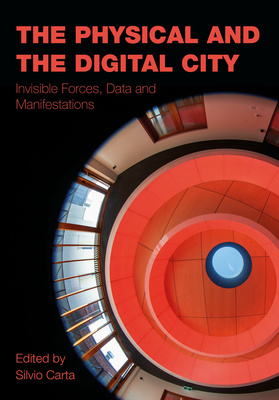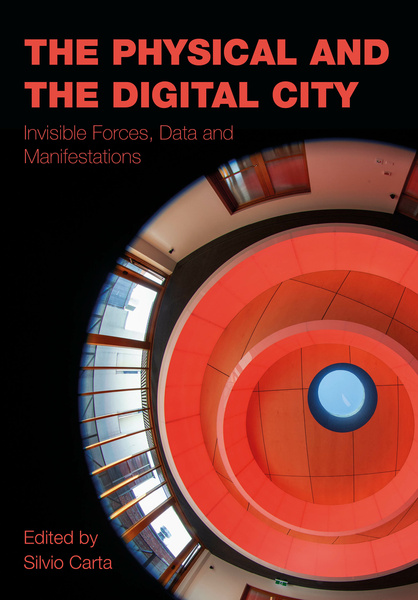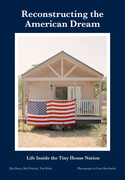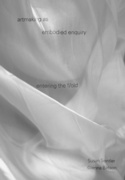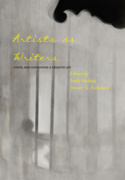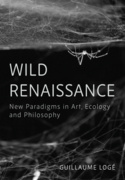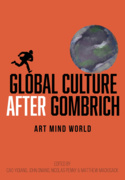The Physical and the Digital City (Book)
Invisible Forces, Data, and Manifestations
The Physical and the Digital City is a unique collection of projects where researchers and designers show how the theories of technology underpinning the digital urban environment are applied in practical and spatial terms. 79 b&w illus.
Edition
The Physical and the Digital City is a unique collection of projects where researchers and designers show how the theories of technology underpinning the digital urban environment are applied in practical and spatial terms. The authors are experts in their respective fields, who pursue cutting edge solutions for city-making and consider the theoretical premise critically. It is designed to be a self-contained and interdisciplinary reference text to introduce students, designers and scholars to the idea of physical/digital and its urban application.
The book will help students and designers to develop a clear understanding of the physical and digital principles underpinning urban assemblages and a solid set of references to start working within this topic with confidence. Of interest to all students and scholars interested in urban studies (geography, planning, urban design, social sciences and humanities) and human-computer interaction (media studies, computer science, social sciences, cognitive sciences, anthropology and psychology). The book will clarify the role of digital technologies within the city, along with its possible implications for people and communities.
It is oriented to the academic and professional communities interested in architectural, urban and digital design from different angles. This includes those interested in computational architecture, for example, eCAADe Education and Research in Computer Aided Architectural Design in Europe, ACADIA Association of Computer Aided Design in Architecture, CAADRIA Computer Aided Architectural Design Research in Asia, SIGraDi Sociedad Iberoamericana de Grafica Digital, CAAD Futures Foundation as well as those interested in the human-computer interaction.
Silvio Carta is an architect (ARB/RIBA), Chartered Building Engineer (MCABE) and Professor of Architecture at the University of Greenwich, UK.
List of Figures
Introduction
Silvio Carta
1. Good Game Peace Out
David Capener
2. Screenness
Toby Reed
3. Mood-Sensitive Spaces: Inspiration from Ambient Assisted Living and Affective Computing
Liz Felton
4. Smooth Invisible: Liquid Surveillance and Architecture
Hüsnü Yegenoglu and Justin Agyin
5. Mediated Participatory Urban Planning and Design: An Interdisciplinary Framework
David Harris Smith, Frauke Zeller, Emily Eyles, John Eyles, Debora Silva De Jesus, and Calvin Hillis
6. Digital Zoning: From Hippodamus to Mixed Reality
Kai Reaver
7. Pattern Recognition—The Big Smart Transactional City
Ian Nazareth and David Schwarzman
8. Outsmarting the City—How Queer Subcultures in Queensborough Used Public Infrastructure for Community, Cruising, and Queering Car Culture, 1890–2000
Patricia Silva
9. The Influence of Artificial Intelligence on Autonomous Vehicle Design and Users’ Lifestyle within Responsive
Urban Environments
Marco Zilvetti, Matteo Conti, and Fausto Brevi
10. Understanding Postmetropolis in the Latest Virtual City: Urban Analysis of Night City in Cyberpunk 2077
Yulin Li
11. Parkour, the City, and Mediated Subjectivities
Fidelia Lam
12. Apple Town Square: Digital Placemaking and Digital Transformation of Urban Public Spaces
Isabel Fangyi Lu
13. Decoding the Phygital Space: Exploring How Youths Produce New Urban Festival Spaces through Social Interactions
Rebecca Onafuye
14. Airbnb Plus Filter: Creating Strategic and Photogenic Interiors
Esra Duygun and Duygu Koca
15. The Smart City in the Smaller Context: Digital Subjectivities and Smart City Development in Rural Conditions
Daniel Koch
Note of Contributors

